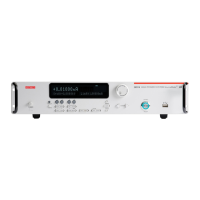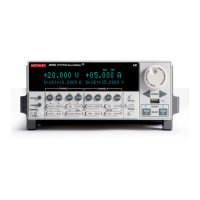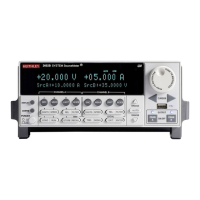Model 2657A High Power System SourceMeter® Instrument Reference Manual Section 4: Theory of operation
2657A-901-01 Rev. B/December 2012 4-27
Load and operating mode
Settling times for the current source will vary with the resistive load applied. In addition to the load,
the times will vary dependent on whether the source-measure unit (SMU) is configured as a voltage
source or a current source, and also with the voltage source range selected.
Pulse width
The pulse width is the interval between 10% on the rising (leading) edge to 90% on the falling
(trailing) edge. The pulse width's jitter can change the pulse width (this is especially important for
short pulse widths).
With respect to pulse width, jitter is the short-term instability of the trailing edge relative to the leading
edge.
The usable pulse width is largely affected by the source settling time and measurement speed, as
well as by the measure count. For the integrating analog-to-digital converter (ADC), the integration
period (nplc) affects the measurement speed. For the fast ADC, the measurement interval affects the
measurement speed. Review the Model 2657A specifications for information on source settling time.
For latest specifications, go to the Keithley Instruments website
(http://www.keithley.com).
NOTE

